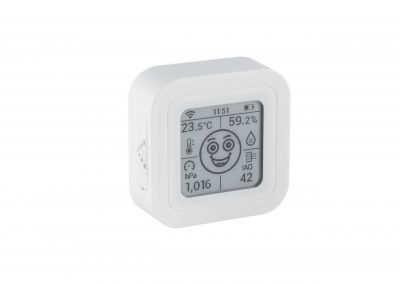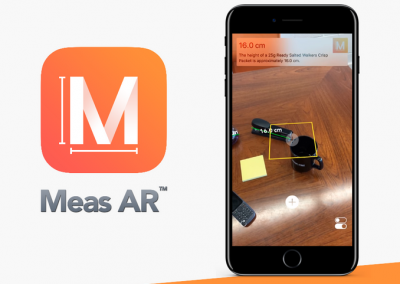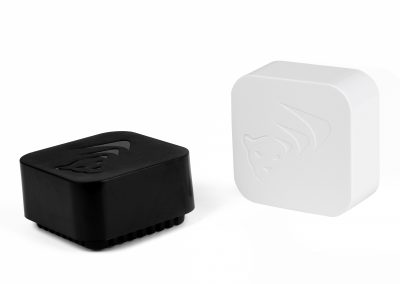What is BluMesh?
BluMesh® is Mesh-Net’s new proprietary Bluetooth 5 mesh networking protocol developed for Industrial IoT (IIoT) applications including Smart Buildings, Lighting, Metering, Wireless sensor networks, Renewable Energy, Data Centers, Remote Monitoring, Industrial and Home automation.
If you are looking for a reliable, scalable and secure mesh networking solution that is easy to setup and deploy then you have come to the right place.
Outdoor Performance
BluMesh performed extremely well with 100% reliability in our outdoor tests.
Our setup consisted of the following:
- 17 nodes (16 servers and 1 client)
- Each server has a LED can be turned ON or OFF
- Servers transmit ON OFF state data every 6 seconds
- Client requests server states every 12 seconds
The map below shows the position and distance of the nodes covering approximately 4000 square meters with the client assigned as node number 1.
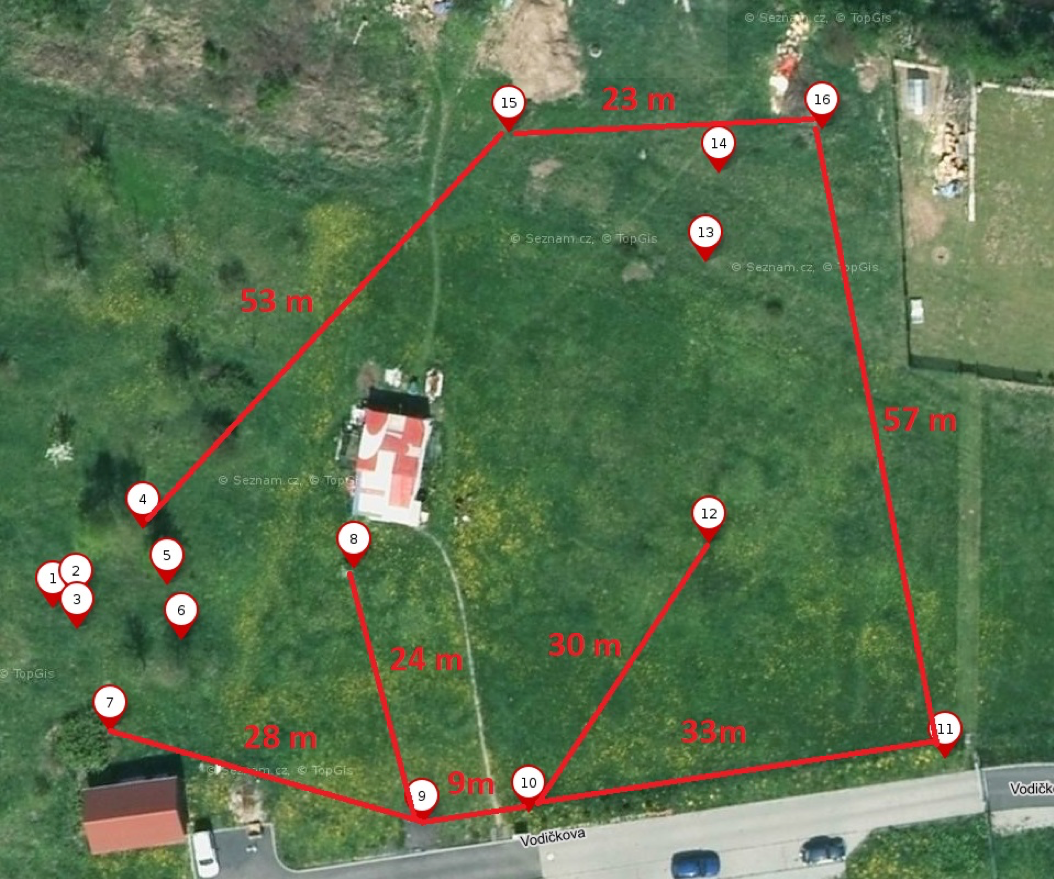
Servers transmitting every 6 seconds
The table below shows the number of data messages sent by the servers every 6 seconds and the number received by the client.

Result: No packets lost – 100% reliability
Client requests every 12 seconds
The table below shows the number of data requests made by client 1 and the number of responses received:

Result: 4 packets lost – almost 100% reliability
Client requests latency
The pie chart below shows the response latency in milliseconds. This is the time elasped since the client sent a request and the received responses from all 16 servers.
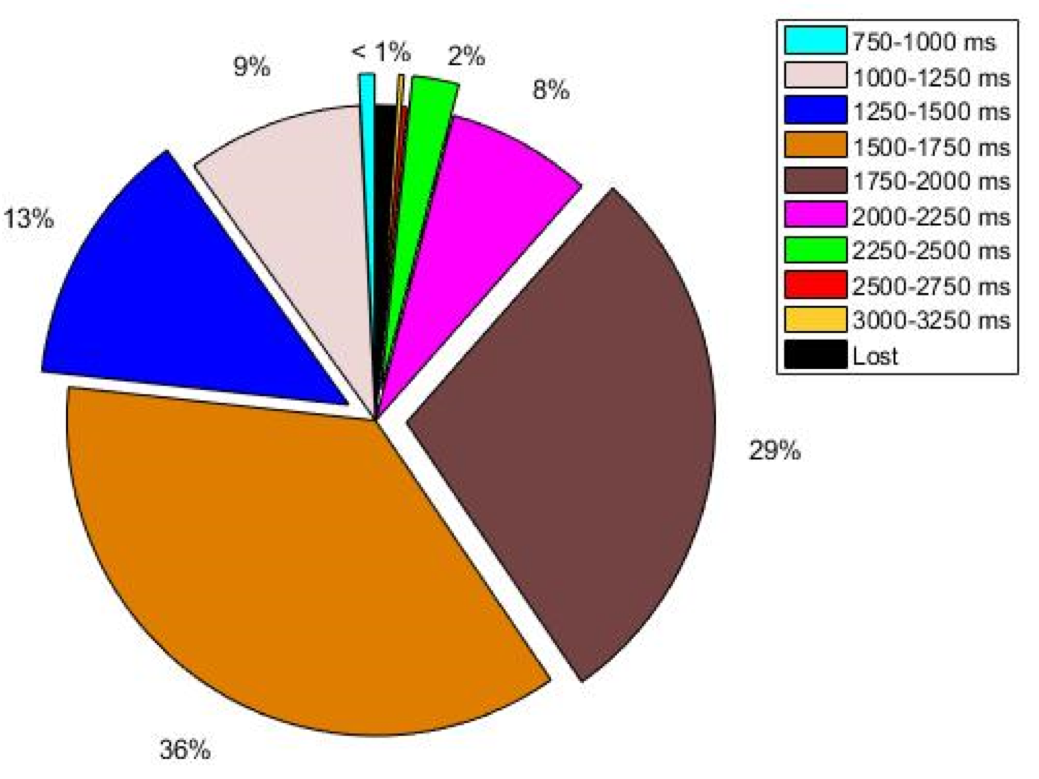
Result: 96% of the requests for data were completed within 2.25 seconds
With such great results outdoors, we were excited to see how BluMesh performs indoors.
Indoor Performance
To evaluate BluMesh’s indoor performance, we doubled the number of nodes as well as increased the data payload to 199 bytes.
BluMesh was deployed at CEME Innovation Center covering approximately 15,000 m².

Our setup consisted of the following:
- 45 nodes (44 servers & 1 client)
- Temperature and humidity data was transmitted every minute
- 199 bytes simulated data payload
BluMesh Network Overview
We deployed 45 BluMesh nodes across the CEME campus as shown below covering the first floor of the CEME Innovation Center as well as the ground floor in the main CEME building.
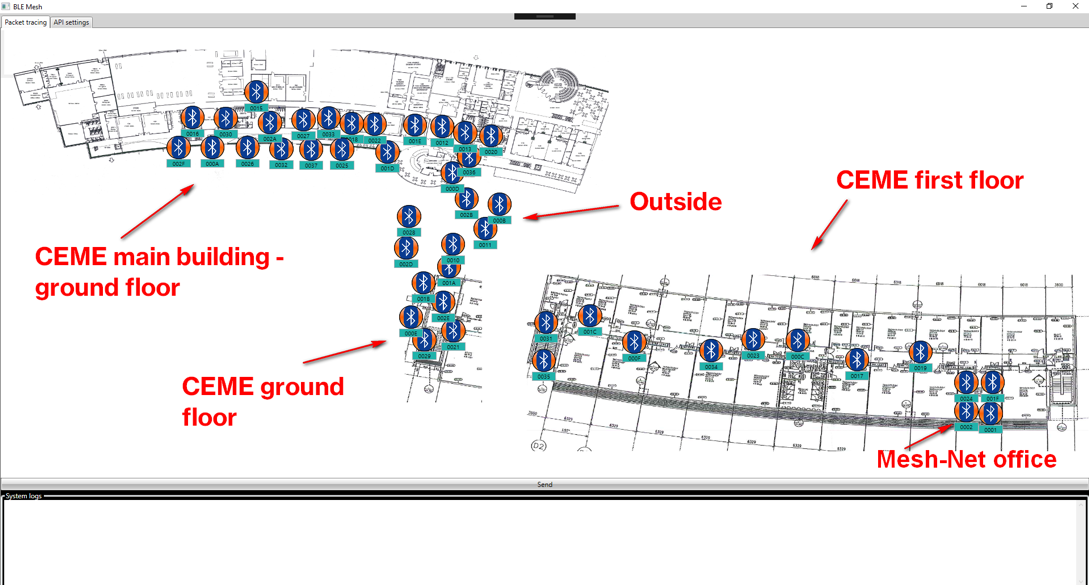
Satellite view for a better perspective on scale, courtesy of Google Maps.
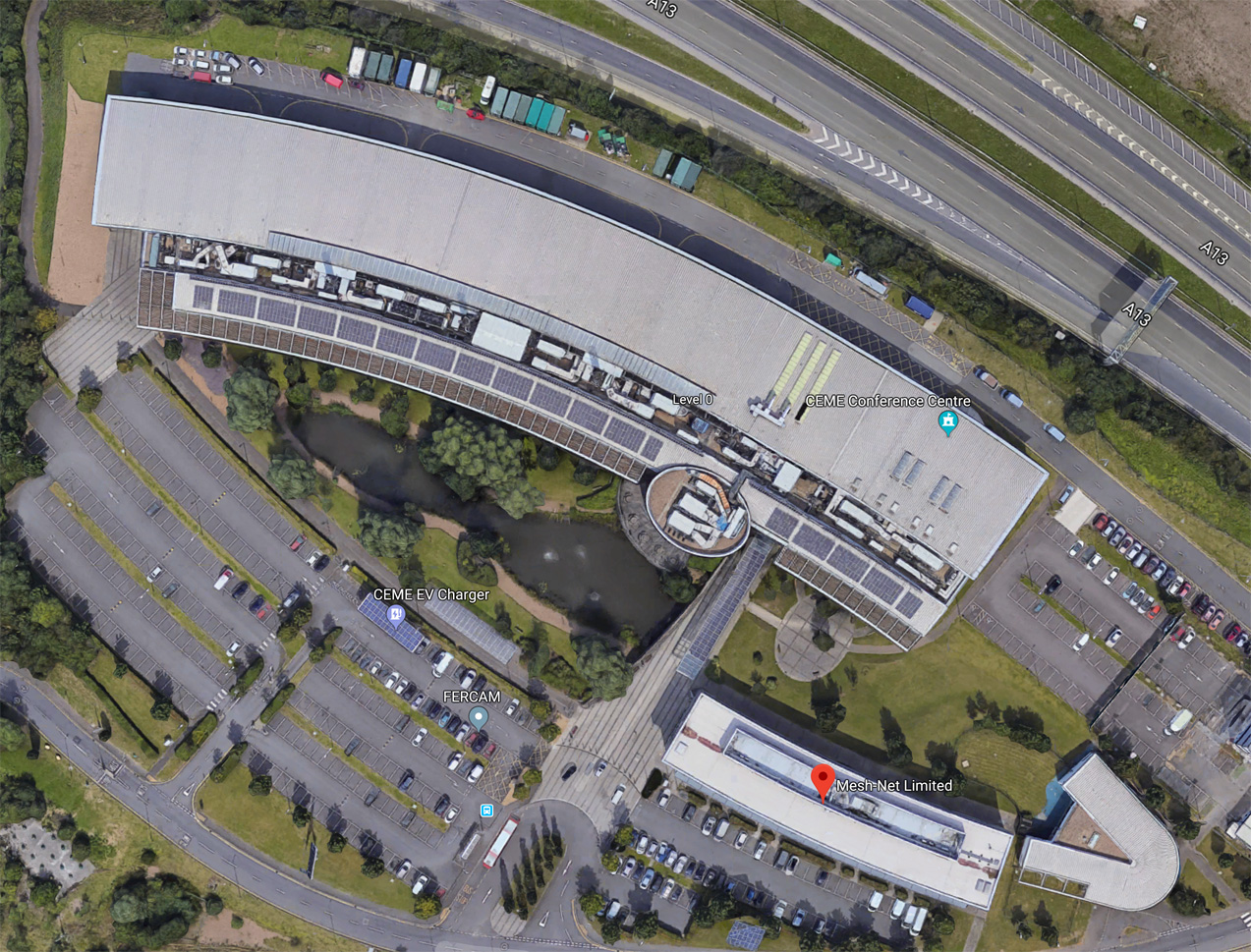
Server Node Messages
To analyse and monitor BluMesh’s network performance we used the Elastic stack (Elasticsearch Logstash & Kibana). Elasticsearch is a highly scalable analytics engine that allowed us to crunch through the large volumes of network performance data quickly.
Each node sent 138 messages (6072 packets)
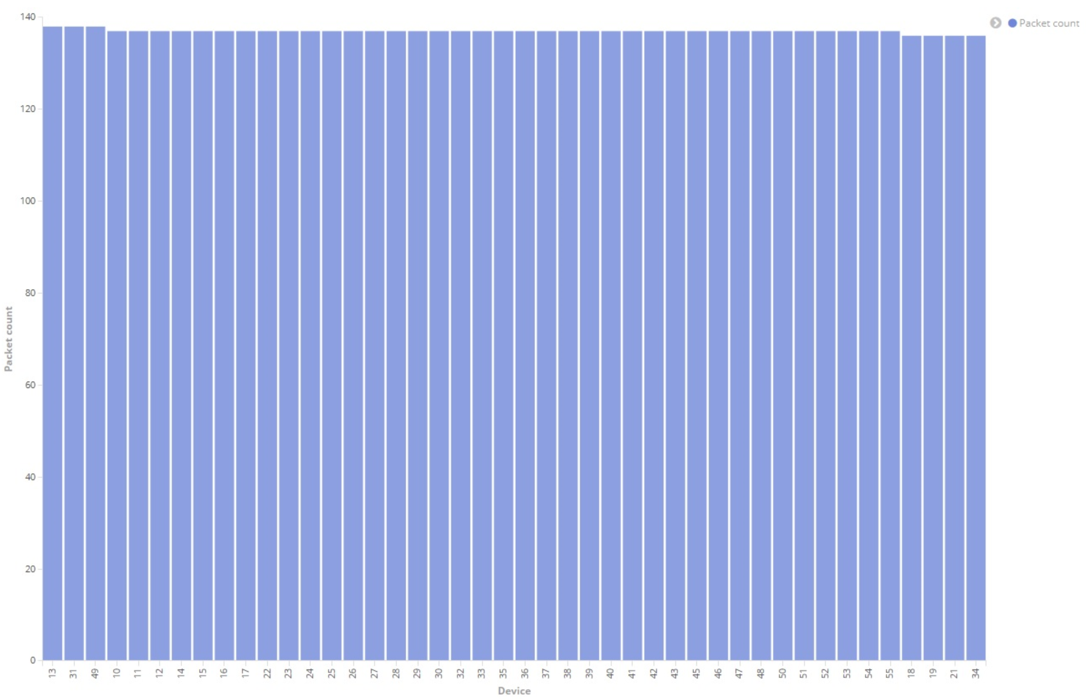
Packet Loss
From the data below only nodes 18, 30 & 35 had one packet loss each. So 3 packets lost out of 6072 packets transmitted which works out to 99.95% network reliability.

Temperature & Humidity Data
The temperature and humidity data collected by the Client from all 44 nodes is shown below:
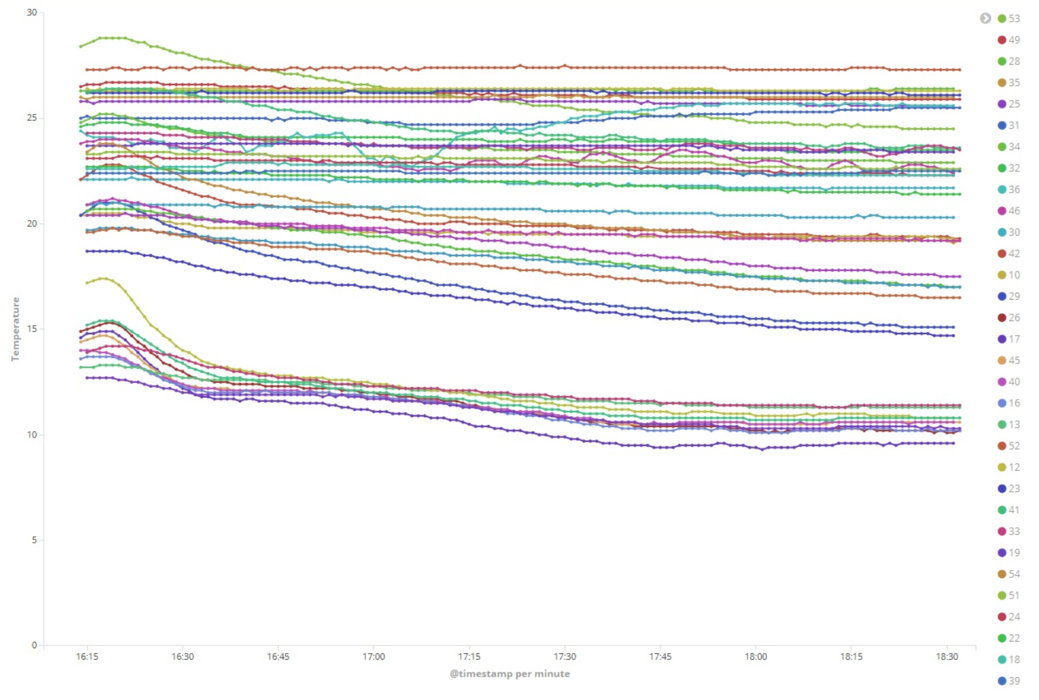
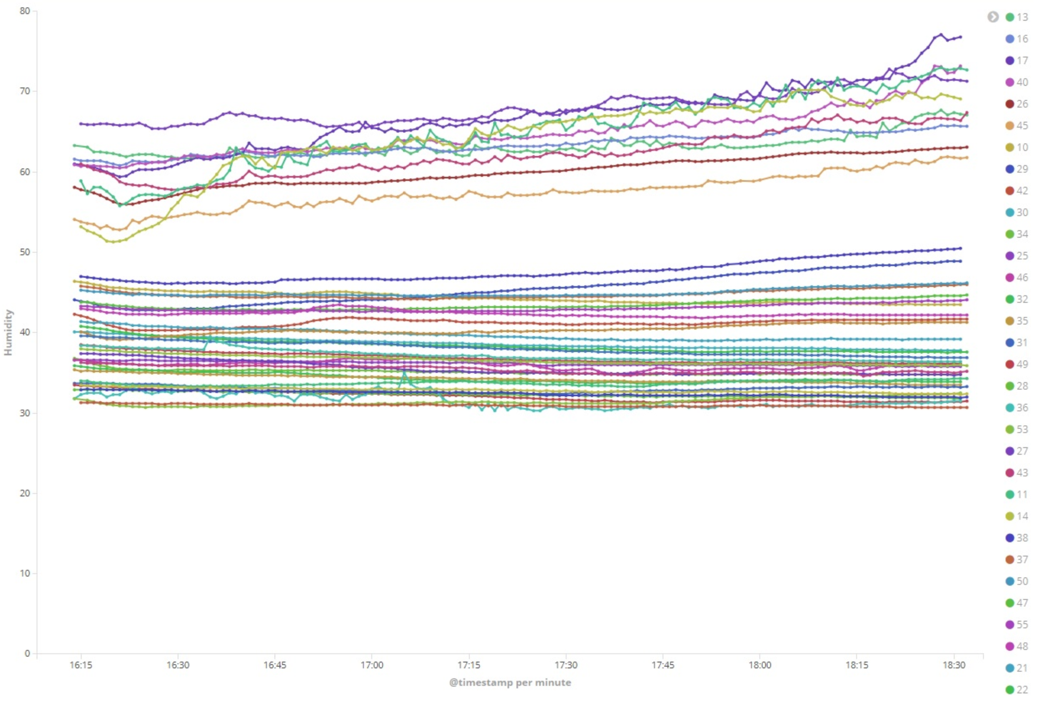
Network Latency & Signal Strength
Using the BluMesh network analysis & configuration software utility that is shipped with the BluMesh development kit, a series of ping messages were sent through the network to test network latency and the weakest signal strength link.
Here is an example of one such ping trace for the furthest node 0x2F (node number 47):
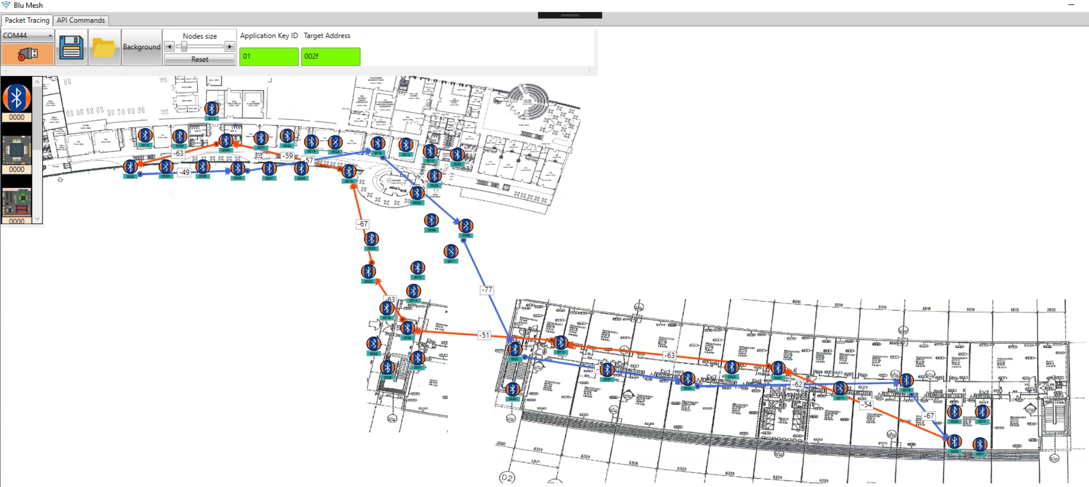
Let’s zoom in a bit…
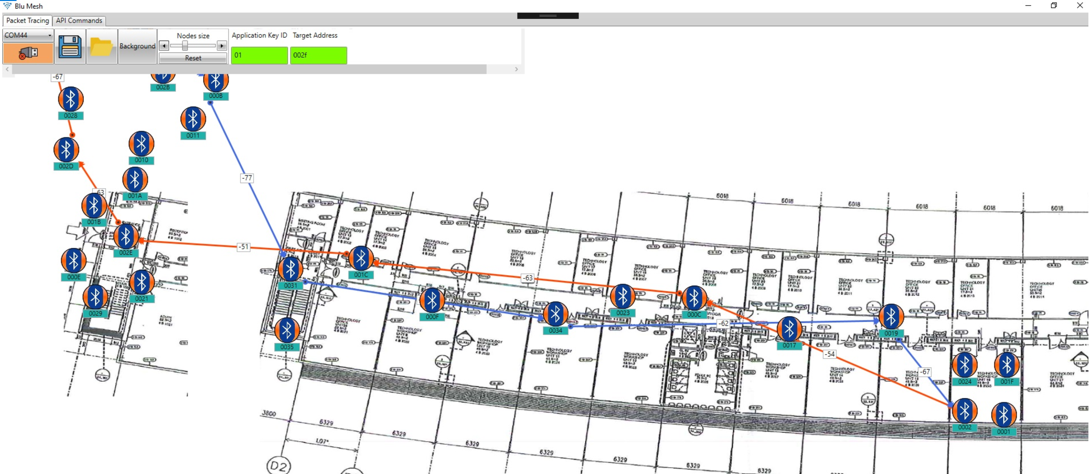
Ping packet path: 0x02 -> 0x0C -> 0x1C -> 0x2E -> 0x2D -> 0x1D -> 0x2A -> 0x2F -> 0x32 -> 0x1E -> 0x08 -> 0x31 -> 0x34 -> 0x19 -> 0x02
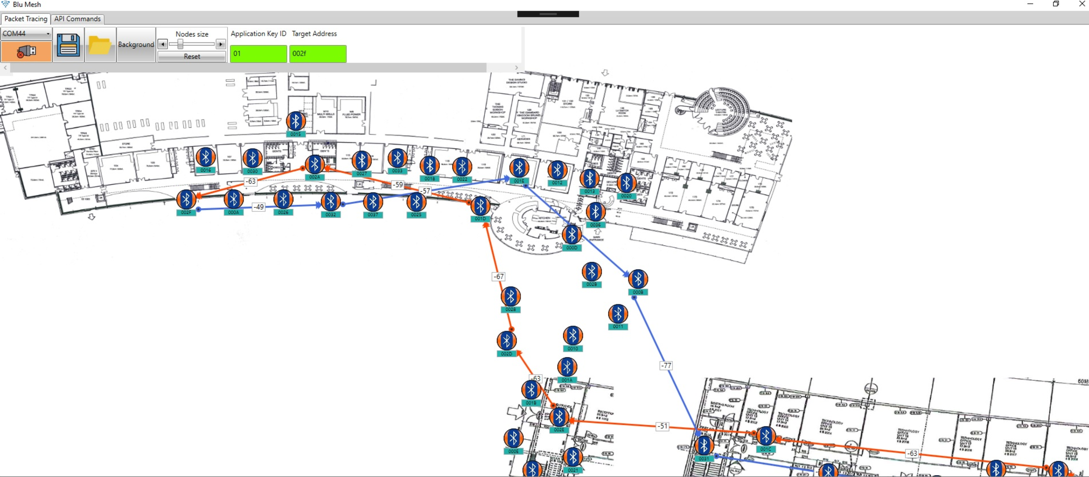
Weakest Signal Strength: -77dBm
Response time: 1.89s
Fantastic results! Even though the weakest signal hop reported was -77dBm, we can see that there are plenty of other nodes in the nearby vicinity that add redundancy to the Bluetooth 5 mesh network. Furthermore, 14 hops were performed in a round trip time of less than 2 seconds.
As the saying goes, the proof is in the pudding, so why don’t you try BluMesh on your premises and see first hand how it performs.
Please chat with us or send us an email using the button the right.



